Sheep Measles
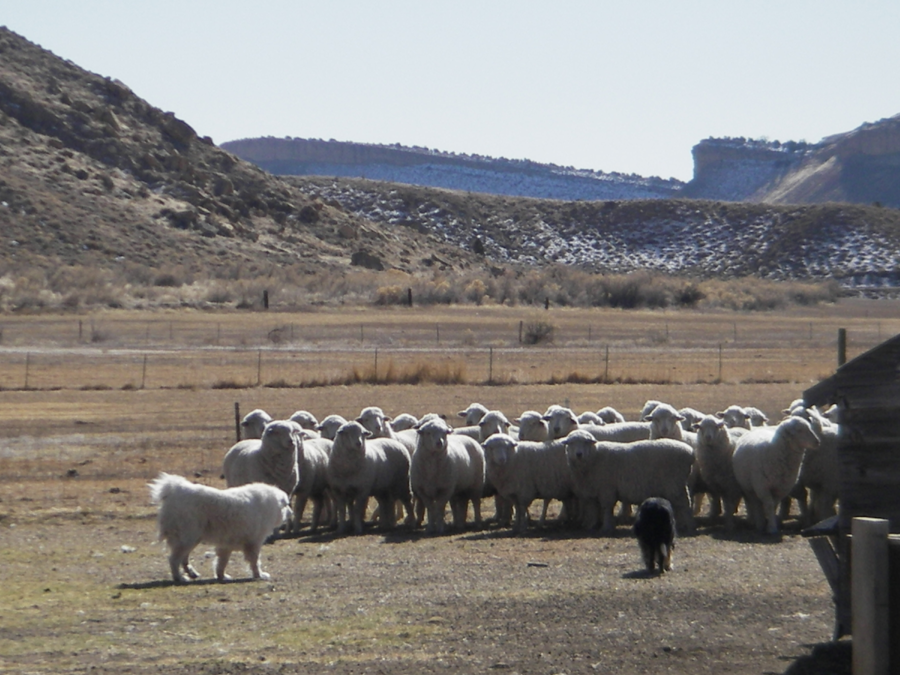
“Ever heard of Sheep Measles?” It’s really not “measles” as we humans
know it. The “measles” in sheep measles are really cysts caused by two different
tapeworms, spread by dogs. This disease can be controlled to some extent then by
de-worming dogs. Yes, as you might, expect coyotes also carry the tapeworms.
However, de-worming your domestic dogs can substantially reduce this problem.
Ovine Cysticercosis
Ovine Cysticercosis, more commonly referred to as “Sheep Measles”,
is an important cause of carcass condemnation. It is a silent disease,
unapparent until slaughter, that cuts into the profits of sheep producers across
the United States.
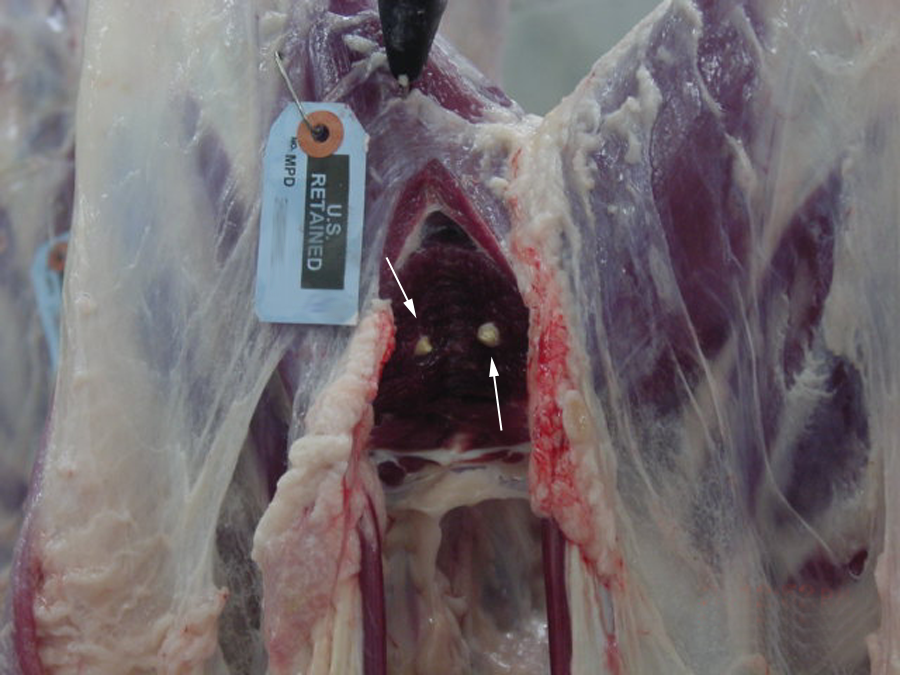
|
|
Figure 1: Condemned carcass due to Cysticercosis ovis found in the leg
muscles.
|
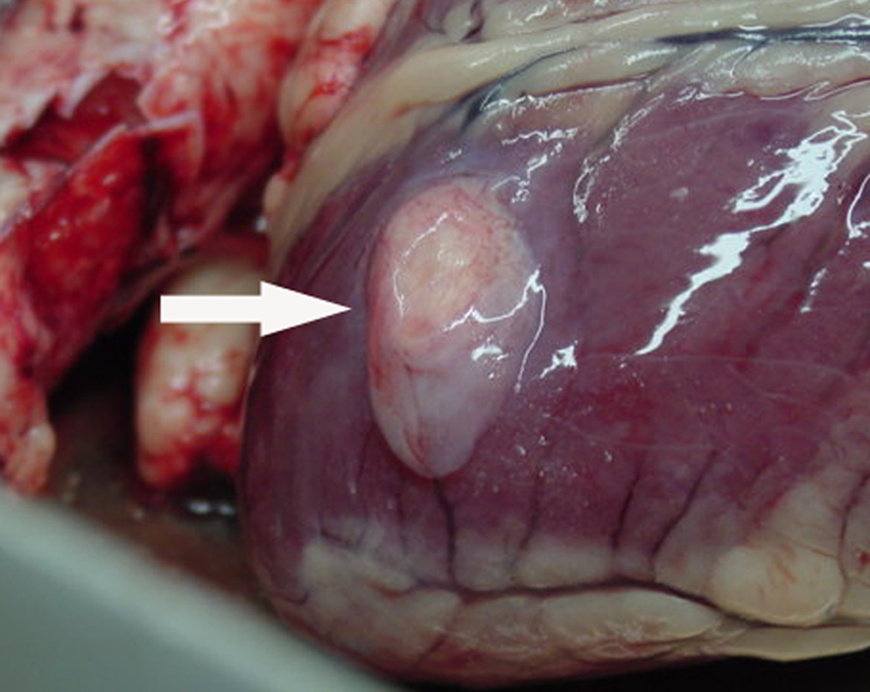
|
|
Figure 2: Bladder worm on the heart, caused by the larvae of Taenia
hydatigena (Cysticercus tenuicollis).
|
Muscular Cysticercosis, or “measles” in sheep, is characterized by
the development of cysts, often degenerated, in skeletal muscle, heart muscle,
and the diaphragm (see Figure 1 and Figure 2). Cysts are first grossly visible
about two weeks after infection as a pale, semi-transparent spot about 1.0 mm in
diameter. Cysts reach maturity in about 12 weeks and are white in color and
about 1.0 cm. These cysts may later calcify.
Visceral Cysticercosis is caused by the larval stage of Taenia
hydatigena called Cysticercus tenuicollis. These larvae migrate in the liver for
several weeks before emerging and attaching to the surface of an organ or to the
peritoneum. They form a large fluid filled cyst which may be up to 8.0cm in
diameter.
Diagnosis
In sheep there are no clinical signs of cysticercosis. Currently diagnosis is
made by finding the cysts at slaughter. The two tapeworms involved elicit an
antibody response in the sheep which can be measured by a serological (blood)
test. This test is not economically feasible.

|
|
Figure 3: Ovine Cysticercosis life cycle.
|
Transmission/Life Cycle
To complete the life cycle tapeworms require two hosts, the adult worm
develops in one host and the larval stage in a different host. The adult worm
always occurs in the small intestine, and the larval stages occur in a variety
of hosts in different locations. The adult worms are long and consist of a
large number of segments, the end segments break off and are passed in the
feces. Each segment contain a large number of eggs in which the larval stage
develop. The larval stage is ingested and travels via the blood stream to their
site of development.
Cysticercosis is transmitted to sheep eating forages contaminated with
tapeworm eggs shed by dogs and coyotes via their feces. The infective larvae
penetrate the intestinal wall and are transported by blood to the heart and
muscles. It takes about 56 days for the cysts to develop in the sheep and about
7 weeks for the tapeworm to develop in the dog. In the case of muscular
cysticercosis, the larvae form cysts in the heart, diaphragm, masseter (cheek)
and other muscles. They appear as white granules in the tissue, thus the name
“measles”. These may result in complete carcass condemnation. They also cause
hide damage which is not detected until tanning, thus making the hide useless.
In the case of visceral cysticercosis, the newly developed larvae migrate
through the liver leaving blood filled channels. This causes condemnation of the
liver. The bladder worm may attach to other organs causing their condemnations.
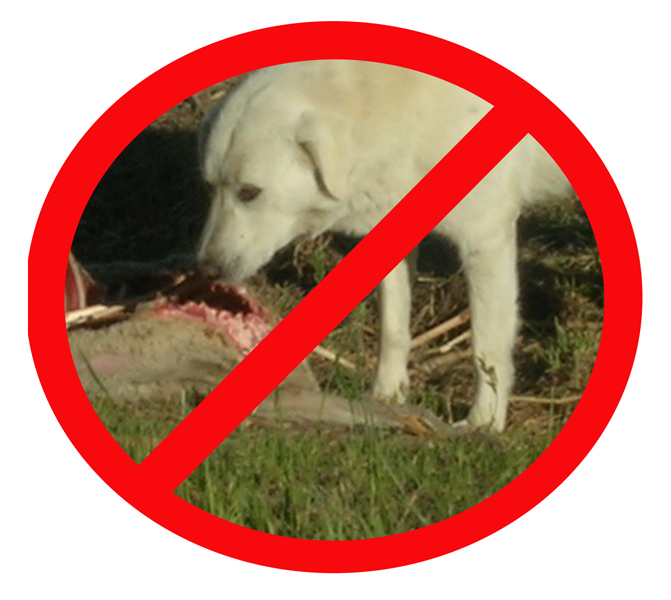
|
|
Figure 4: DO NOT ALLOW dogs to feed on sheep carcasses.
|
CONTROL/PREVENTION
- Do NOT allow dogs to feed on sheep carcasses.
- Deworm dogs at least 2X per year, and up to 4 X’s per year for high exposure (farm) animals.
- Require hunters, etc. to deworm their dogs prior to coming on your property.
- Vaccination of sheep is not currently available in the U.S.
TREATMENT
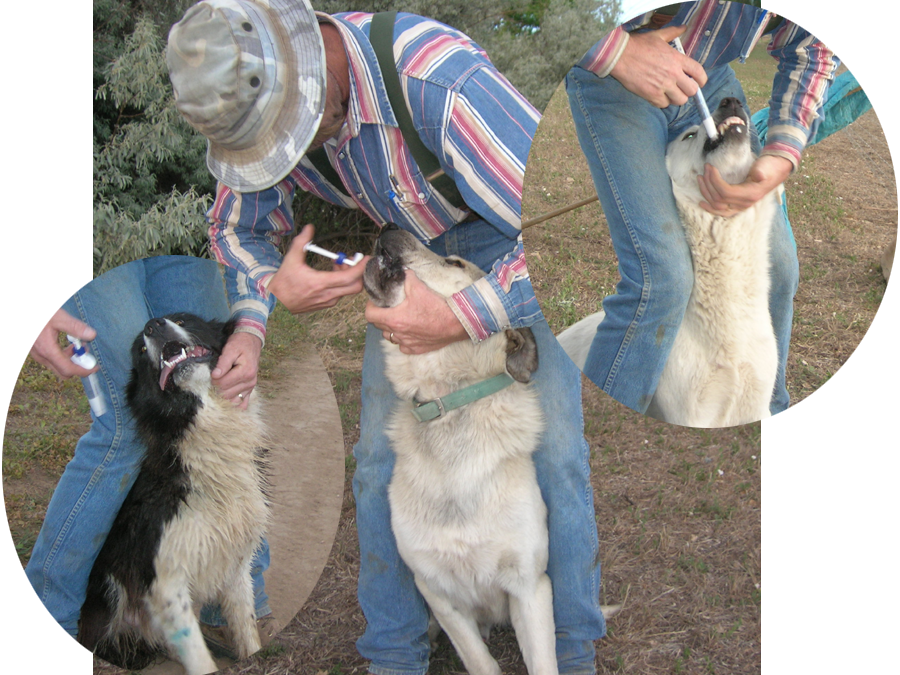
|
|
Figure 5: Worming dogs.
|
Praziquantel (Droncit®) 34 mg tablets.
| Dosage: |
31-45lb dog = 2 X 34 mg tablets |
|
46-60lb dog = 4 X 34 mg tablets |
|
> 60lb dog = 5 X 34 mg tablets (do not exceed 5 tabs or 170 mg) |
Droncit tablets retail at $2.75 - $6.50 each.
One tube of EquiMAX (formulated and approved for
horses) contains 900mg Praziquantel or enough medication
for 6 animals weighing over 60#. The cost is about $2.50/treatment.
This product used in dogs is Extra-Label and should be discussed with
your veterinarian for proper use and dosage.
ECONOMIC IMPACT
In one plant, which processes on average 400,000 lambs per year, carcass condemnation
due to measles costs approximately $40,000 ($.10 per every lamb processed). This does not
include down time on the processing line or damaged carcasses being sliced when
inspectors look for additional cysts. These figures applied to the total number of
lambs processed in the US each year amounts to a $280,000 loss to the industry.
For more information about sheep measles and the importance of incorporating a sound
deworming program for your dogs into your sheep operation contact:
Optimal Livestock Services, LLC
970-231-2477
Prepared by Cleon V. Kimberling, Gerilyn A. Parsons, Jay Parsons, and
Wayne Cunningham
Copyright © 2010 CleonsCorner.com All Rights Reserved
